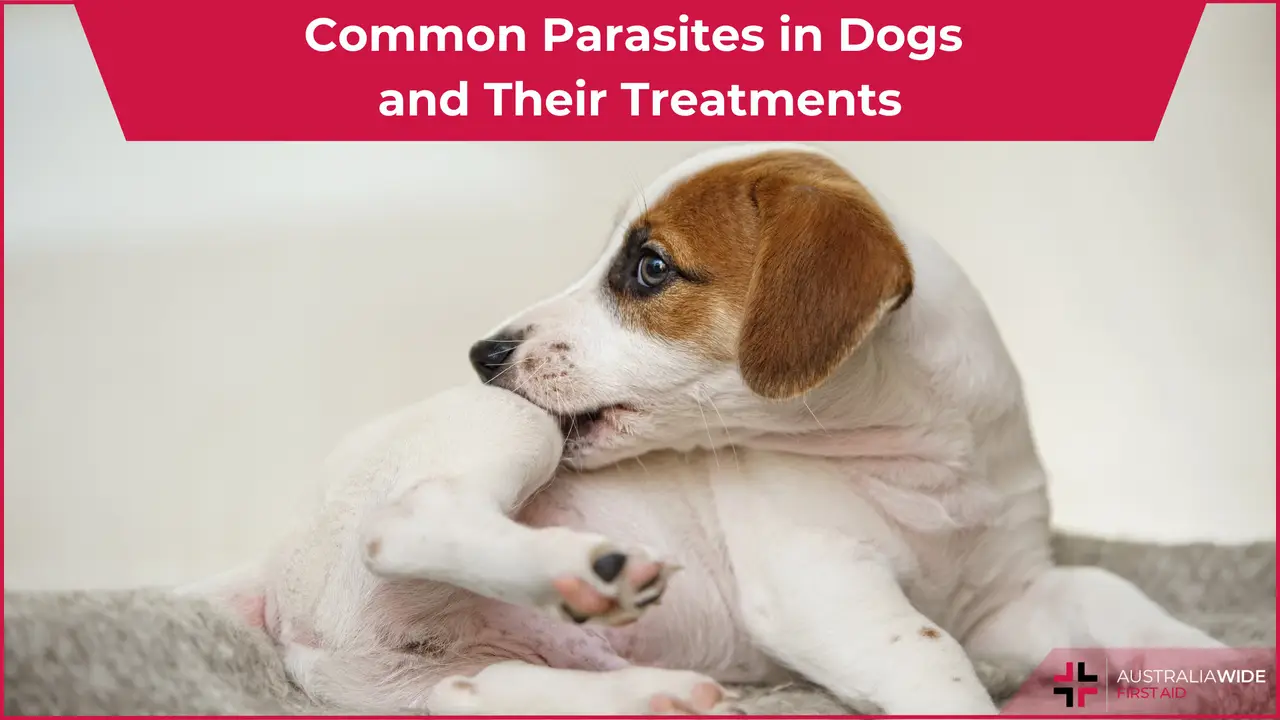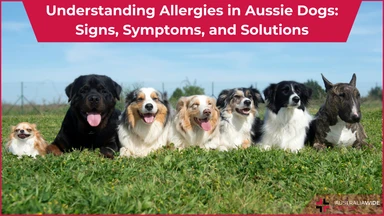Common Parasites in Dogs and Their Treatments


Throughout the years, pets have evolved into integral members of households.
Ensuring a clean and hygienic environment safeguards your pets and loved ones from harmful germs. Maintaining cleanliness around the house is essential for the well-being of everyone in your home, including your cherished pets, shielding them from potential health hazards.
However, even after intensive care towards hygiene, your pets can still catch deadly common parasites that could affect their health and overall well-being.
In Australia, dogs can be susceptible to various external and internal parasites. Pet owners need to be aware of these parasites and take preventive measures to protect their dogs.
So, hold on! In this guide, we will discuss both internal and external common parasites for dogs in Australia and how you can treat your four-legged friend.
Fleas
Fleas are common external parasites that bring discomfort and potential health issues in their hosts, posing a risk of disease transmission. Recognized for their remarkable jumping abilities, these small, wingless insects are ectoparasites that feed on the blood of mammals and birds, including humans.
Ticks
Found in many regions of Australia, it can transmit diseases such as Lyme disease and Tick paralysis. They are also known as ectoparasites, which feed on the blood of their hosts. They are commonly found in wooded and grassy areas and can pose health risks to both animals and humans.
Mites
Mites are tiny arachnids that can spread over the skin of dogs, leading to various skin conditions. Sarcoptic mange and demodectic mange are commonly found in dogs and are caused by different species of mites. Mites can lead to intense itching, hair loss, and skin infections.
Fleas can lead to skin irritation, allergic reactions, and itching in your pet. Watch for red, sore bumps or blisters, and be alert to the presence of ‘Flea dirt’- small, pepper-like waste produced by fleas. Occasionally, you may observe visible fleas, small wingless insects in brown or black with remarkable jumping abilities.
Ticks can be easily identified in dogs through the naked eye, particularly in areas with less fur, such as ears, between toes, or around the neck. Owners can also look for signs of raised bumps or lumps on the skin, especially after a tick has been fed. Infestations can cause redness and irritation at the site of attachment.
Dogs infested with mites often exhibit intense itching and may scratch or bite excessively. It can cause localized or generalized hair loss, particularly around the ears, face, paws, and abdomen. You may also see redness, swelling, or crusting of the skin, especially in areas with thin fur.

Owners can get topical treatments, such as spot-on medications, that are applied directly to the dog’s skin. These often provide long-lasting protection and kill fleas, ticks, and mites at various life stages.
Veterinarians can also prescribe oral medications that target parasites systemically and are effective in preventing infestations.
If you find a parasite on your dog, use fine-tipped tweezers to grasp the parasite, and clean the bite area and your hands by rubbing alcohol, an antiseptic, or soap and water. Moreover, make sure to clean and disinfect your dog’s living environment.
Hookworms
These intestinal worms in dogs attach to the lining of the dog’s intestine, feeding on blood and causing health issues. Hookworm eggs are expelled in faeces, and infection occurs through ingestion or penetration by larvae. The worms look like long strings of spaghetti and pose a health risk to humans.
Roundworms
Roundworms are another type of intestinal worm that inhabits the dog’s digestive system. Roundworm eggs are passed in the dog’s faeces, and transmission occurs through ingestion of contaminated soil, water, or infected prey.
Whipworm
Infection occurs through the ingestion of contaminated material, particularly in settings where multiple dogs coexist with access to faecal matter. The eggs become detectable in faeces three months after infection and can endure in the external environment for several years. Worms are typically not visible in the stool.
Tapeworm
Living in the intestines of dogs and cats, the hydatid tapeworm has a small, rice-like appearance observable in the stool. Transmission to dogs occurs mainly from sheep, emphasizing the importance of regular deworming for farm-dwelling dogs.
Heartworm
Contracted via a mosquito bite, a heartworm can result in severe heart and lung disease if not addressed. An untreated infection can lead to a dog's death within a few months.
The symptoms of internal parasites in dogs vary depending on the type and severity of the infestation.
Common signs include vomiting, diarrhoea, and constipation. A gradual weight loss despite a regular diet may indicate intestinal parasites.
Additional signs such as scooting or excessive licking of the anal area, coughing, lethargy, a swollen abdomen, the presence of blood or parasites in the stool, anaemia, and dehydration can suggest the presence of internal parasites in your pet.

Veterinarians often prescribe anthelmintic medications to kill internal parasites. These medications may come in the form of tablets, liquids, or injections.
But before prescribing any medicines, they will perform a faecal examination to identify the type of internal parasite infections. Establishing a routine deworming schedule is essential for preventing and managing internal parasite infections.
Cleaning and disinfecting the dog’s living environment can help reduce the risk of re-infestation. This includes regularly removing and disposing of faeces from the yard or living space.
In addition to treating current infections, veterinarians may recommend preventive medications to protect dogs from future infestations.
Consulting with a veterinarian is crucial to securing a precise diagnosis and a customised treatment plan for your dog. Veterinarians consider factors such as the dog's overall health, age, and specific conditions when providing treatment recommendations.
Timely intervention and preventive measures, such as regular grooming and maintaining a clean living environment, are essential for the efficient management and prevention of parasite infestations.

April 16, 2024
Like humans, our canine friends are susceptible to allergies, which can significantly affect their quality of life. This article aims to shed light on common allergies in dogs, their signs and symptoms, treatment options, and advice on when to consult a veterinarian.

March 19, 2024
From respiratory distress to changes in droppings and abnormal behaviours, this guide outlines the key indicators of illness that require immediate attention. By understanding these warning signs, bird owners can take proactive steps to ensure their feathered companions receive timely medical treatment, ultimately promoting their health and well-being.

February 12, 2024
In the hustle and bustle of our daily lives, it's easy to overlook that our furry friends may not be leading lives as fulfilled as we'd like. Just like humans, dogs too can suffer from monotony, especially those spending large amounts of time indoors. Recognizing and addressing boredom in our canine companions is crucial for their overall well-being.